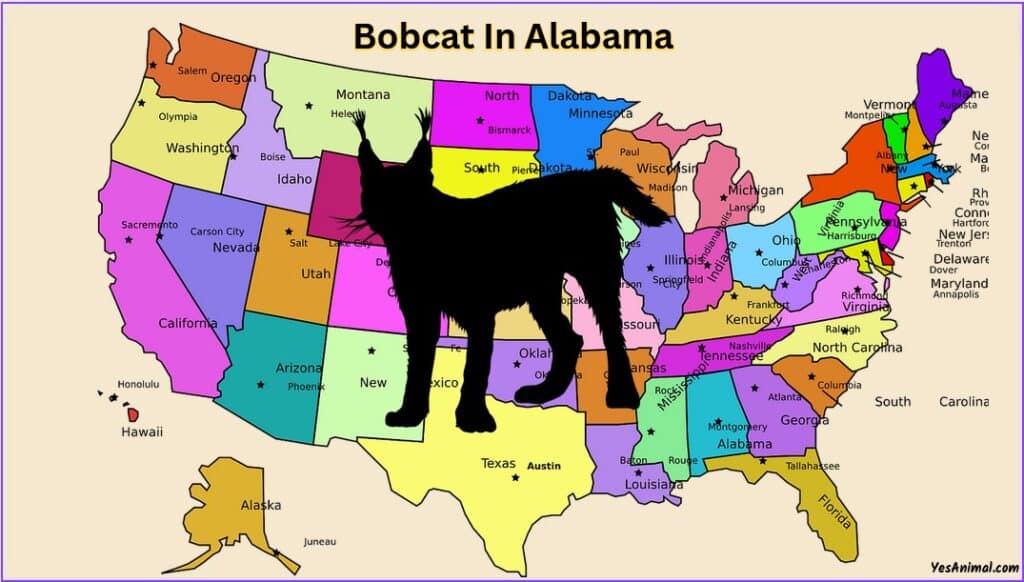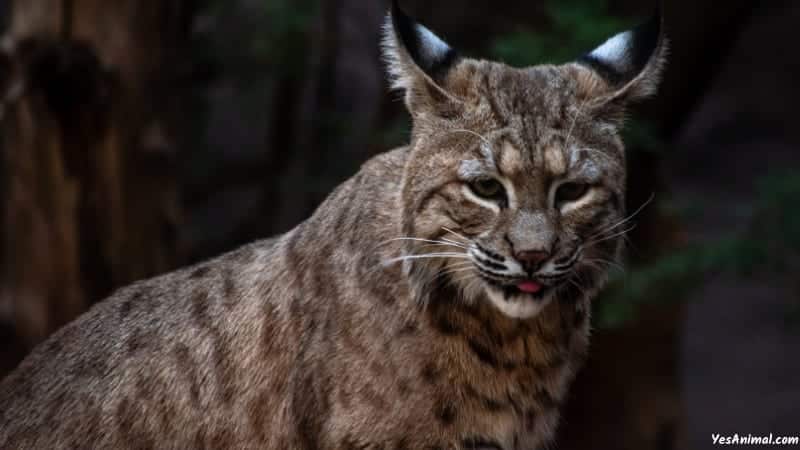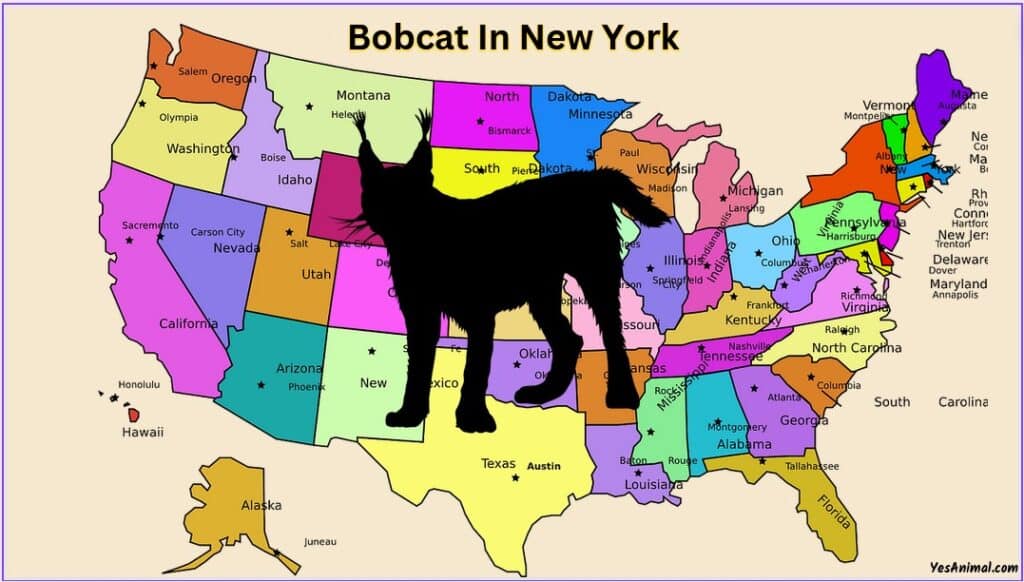Last Updated on September 14, 2023 by Amin Tawar

Alabama is known for a lot of things. From the Bald eagle to the American alligators, there is a range of wildlife found just in Alabama. And naturally, there is a big rush of travelers that come to the state to observe these magnificent animals.
But what about the fierce little Bobcats? Do they really reside in Alabama?
Below I’ve explained everything you need to know about the presence of Bobcats in Alabama.
Are There Bobcats in Alabama?
Yes, there is a stable breeding population of Bobcats in Alabama. Scientifically called Felis rufus, these wildcats have reddish-brown to smoky gray fur with black spots and streaks. They also have uniquely shaped and colored tail that looks as if it’s been “bobbed” and yes, that’s where these cats got their unique name.
All these physical features along with their top-notch hiding skills, help them camouflage in their surroundings. This helps them catch their prey and avoid predators like wolves, coyotes, and occasionally even mountain lions.
Where do bobcats live in Alabama?
Although we can’t pinpoint the exact location of Bobcats in Alabama. But their range covers almost the whole of the state. As per the state’s wildlife agency reports, most of these wildcats are sighted and reported on the borders of agricultural lands and on the edge of forests.
It is important to note that, Bobcats can survive in almost any type of landscape. Though they prefer canyons, dense woodlands, and mountainous regions, don’t be surprised if you spot them in swamps, hardwood forests, etc.
How common are bobcats in Alabama?
Oh, bobcats are quite common in Alabama. As they thrive in almost every type of landscape, you will most likely find at least one in every region of Alabama. But is also important to know that, just as other wildlife creatures’ population varies across the state, so does for bobcat in Alabama.
Bobcats are elusive in nature and avoid humans at all costs. As previously explained, they also have a unique fur pattern that helps them evade onlookers. This may therefore make it challenging to not just spot them but also to determine their population numbers.
Therefore, while there is an established growing population of bobcats in the state, you may find it difficult to spot them if you aren’t looking closely.
How Large Is an Alabama Bobcat?

Bobcats are not large mammals in comparison to big cats like lions, tigers, and jaguars. However, they are bigger than domestic cats and smaller than their nearest cousin Canada Lynx. In fact, bobcats are almost double the size of a pet cat.
As per historical records and current sightings, when measured, Bobcats are about 2 to 4 feet in length and stand at 2 to 3 feet in height.
They aren’t that heavy especially the female ones that weigh about 21 pounds. On average, bobcats weigh anywhere between 20 to 30 pounds in Alabama, and the largest individual can sometimes even weigh 40 pounds. Add to this, they are also quite agile and fierce and therefore shouldn’t be taken lightly.
Also Check Our Guide On Bobcats In US
Are Bobcats Aggressive in Alabama?
All animals exhibit a degree of aggressiveness. Be it a tiger, human, or even bobcat for that matter. But it strongly depends on who or what is on the other side. For instance, Bobcats are not aggressive toward humans, but they are toward their prey in order to hunt them for consumption.
The only exception is when these wildcats are cornered or threatened, especially when there is a food source or a young Bobcat in the picture.
In such cases, Bobcats can be highly defensive and may even attack you or anyone in the picture. Therefore, while rare, Bobcats do have the potential to harm. And so, any individual near their vicinity should tread carefully so as not to be viewed as a threat.
Can You Kill a Bobcat in Alabama?
Unlike in many other states of the country, you can kill a Bobcat in Alabama with a permit and license. These licenses and permits along with regulations and management of the bobcat population are under the radar of the Alabama Department of Conservation and Natural Resources.
Bobcat hunting in Alabama is conducted and allowed only during daylight hours. There is also no closed hunting season or bag limit. So, you can hunt as many bobcats as you want.
However, don’t forget to report the killings to the Alabama Department of Conservation and Natural Resources. Your immediate reports will significantly help the agency to monitor and manage the sustainable killing of bobcats in Alabama.
Can You Own a Bobcat in Alabama?
No, It is illegal to own a Bobcat in Alabama without permits and licenses. These are issued by the Alabama Department of Conservation and Natural Resources. But it’s important to note that permits and licenses are provided only for specific purposes like education, rehabilitation, and research.
In addition to the above legal issues, owning a bobcat as a pet is also quite dangerous. They are not like your cute neighborhood pet cats. In addition to their potential to harm humans, as wild animals, these creatures may also carry unique diseases which may be fatal to us humans when passed on.
What To Do If You See a Bobcat in Alabama?
It’s highly likely that you may spot a Bobcat in Alabama if you live near farmlands or forested areas. As Bobcat’s threat is established, what can we do to prevent it?
When you do spot a bobcat, make loud noises, and show your presence, avoid going nearer to it and rather maintain a safe distance so that it could move away comfortability, and at any cost avoid feeding them. In fact, food is one of the top reasons for Bobcats’ and humans’ conflicts.
Also Check Our Guide On Bobcats In Wisconsin
Conclusion
And that was everything you need to know about the Bobcats In Alabama. I hope this article was informative and your queries were answered.
Thank You For Reading!
Our Goto Source For This Guide
